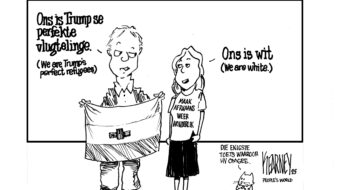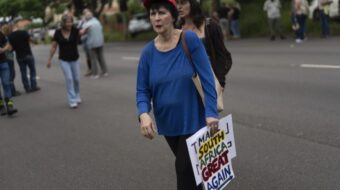DURBAN, 1 April 2009 (PlusNews) – South Africa’s fourth national AIDS conference opened in the east-coast city of Durban this week with calls to scale up AIDS programming in a country that still has a long way to go in reversing the epidemic.
Conference chair and deputy director of the Desmond Tutu HIV Foundation, Professor Linda-Gail Bekker, told the over 4,000 delegates that South Africa was still in the ‘red zone’ on maps reflecting the severity of the virus, ‘always seeming to have more numbers of HIV-positive people and TB patients’.
The reasons why the southern Africa region has been worst hit by the epidemic were explored by Dr John Hargrove, director of the Centre of Excellence in Epidemiological Modelling and Analysis (SACEMA) at the University of Stellenbosch, South Africa.
Hargrove found that ‘the problem is not so much roads [along which the disease can spread] as [Cecil John] Rhodes’, the 19th century mining magnate, because recruiting men from all over southern Africa to work in South African mines had led to disastrous consequences for families, and created a breeding ground for the spread of HIV.
Countries such as Zimbabwe, Zambia and Malawi had started registering lower rates of HIV prevalence, but there was ‘little evidence’ of any major decline in South Africa. Hargrove suggested that antiretroviral (ARV) treatment could be used to end the epidemic: ‘Use ARVs as an offensive weapon to kill the epidemic, not just as a defensive [weapon].’
Once patients started taking ARVs, their viral load (the amount of HIV in the blood) was significantly reduced and they became much less likely to transmit the virus, he noted. Also, by introducing universal HIV testing once a year and then starting people on treatment immediately, HIV could be eliminated.
Hargrove was echoing findings from a recent study published in the British medical journal, The Lancet, which suggested that immediate treatment – regardless of CD4 count (which measures the strength of the immune system) – could significantly reduce new infections.
Only half in need on treatment
South African Deputy President Baleka Mbete told the conference that, ‘By January 2009, 695,293 people were on antiretroviral treatment. But we are only treating about half the people who need treatment.’
She acknowledged that the country’s plans to curb the spread of HIV would not succeed without ‘political will and financial support’ from government.
Unlike previous conferences in South Africa, this year’s meeting takes place in a less politically charged atmosphere. In the past, relations between the government, researchers and AIDS activists have been marked by tension and conflict.
Archbishop Desmond Tutu noted that the country had moved on, and ‘now at least we have orthodox views on HIV and AIDS’.
Tutu delivered the Nkosi Johnson Memorial Lecture with Luyanda Ngcobo, 16, who was born HIV positive. He told delegates his biggest challenge was that he would have to take his medication every day at the same time ‘for the rest of my life’.
In 2000, 11-year-old Nkosi Johnson spoke to thousands of delegates at the International AIDS Conference about being HIV positive. He died later that year, and the lecture has since been named in his honour.









